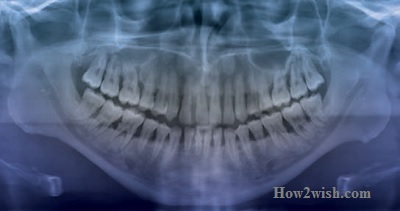What is periodontitis in adults, and what are the symptoms, and treatment? The disease begins with gingivitis (inflammation of the tissues around the tooth) and does not become more severe if high-quality therapy is started on time. At the very beginning of the disease, the use of folk remedies is permissible, however, any manipulations and procedures should be discussed with the attending physician.

Pathology is curable, but it is much easier to adhere to preventive measures and prevent its occurrence. Compliance with hygiene is a guarantee of health not only of the oral cavity but also of various organs and systems.
What is periodontitis
The tissue surrounding the tooth is called the periodontium. This includes the gums, root part, socket, and dent gingival ligaments. The tasks that these elements perform:
- Reliable fixation of dental units in a certain place;
- Uniform distribution of chewing load;
- Muscle fiber management.
When the functioning of these structures is disturbed under the influence of certain factors, an inflammatory process occurs, and the destruction of the alveolar processes occurs. In the absence of timely medical intervention, incisors, canines, and molars become mobile and subsequently fall out, and purulent discharge and abscess are observed.
Pathology is often diagnosed against the background of chronic diseases. At risk are patients with diabetes mellitus, hypothyroidism, gastric ulcer, and heart failure.
Development of periodontitis and your overall health
Problems begin from the very moment when a person stops caring for the oral cavity, and a large amount of persistent plaque accumulates on the enamel. The rotting of food particles and a humid, warm environment contribute to the active reproduction of pathogenic bacterial flora. As a result, acids and other aggressive substances are produced that corrode crowns and deeper layers, and soft tissues become inflamed.
Gingivitis appears the gums begin to bleed. If this process is not stopped in time, periodontal pockets are formed, and the infection penetrates the roots. There is a strong sensitivity when using hot or cold foods, and drinks. Then the rows are loosened, and individual units fall out completely or partially.
Statistics
This is one of the most common dental diseases in the world. It is second only to caries. According to statistics provided by the World Health Organization, the pathological process occurs in more than 94% of the inhabitants of the planet.
Periodontitis – ICD
According to the International Classification of Diseases of the Tenth Revision, pathology has codes K05.2 (acute) and K05.3 (chronic).
Symptoms
The clinical picture is determined even at the earliest stages. Symptoms of the disease depend on its location, type, and severity. Let’s consider, what phenomena it is possible to suspect the presence of problems with periodontal disease.
Main symptoms
In most cases, there are:
- Bleeding gums (gingivitis);
- Bad breath;
- Compaction and change in the shade of soft tissues;
- Increase in interdental spaces;
- The appearance of dense plaque and stone;
- The formation of periodontal pockets;
- Loosening of dental units;
- Hypersensitivity when eating hot and cold, sweets;
- Discomfort while chewing food;
- Extraneous gum secretions;
- Tooth loss;
- Cyanosis of mucous membranes.
If you find any of the above manifestations, you should immediately consult a dentist. With timely medical intervention, there is a possibility that the disease will go away after using alternative methods of therapy.

Additional symptoms
In rarer cases, you may also notice:
- Increased viscosity of saliva;
- Fistulas or abscesses;
- The feeling of pulsation in the gums;
- Swelling and inflammation of the mandibular lymph nodes, soreness (especially when pressed);
- Headache, migraine.
Causes of periodontitis
There are several factors contributing to the development of pathology. The most common is poor-quality hygienic care for the oral cavity. Infectious agents (mainly streptococcus or staphylococcus bacteria) actively multiply, and the products of their vital activity and decay penetrate deep tissues, causing irritation and severe inflammation.
visit related post Crooked Milk Teeth: Causes and Treatment Options
Also, the disease can lead to:
- Bite anomalies and defects of the dentoalveolar system;
- Increased tone of masticatory muscles;
- Violations of the integrity of the mucous membranes;
- Insufficient blood supply to the gums;
- Deficiency of vitamins and minerals;
- Physical injury to incisors, canines, or molars upon impact, or fall;
- Accumulation of a large amount of plaque and tartar;
- Bad habits (smoking, alcohol abuse);
- Chronic pathologies of the urinary system;
- Alzheimer’s disease;
- Stressful situations, experiences;
- Imbalance of hormones in the body;
- Weakening of the immune system.
Development
There are several stages of periodontitis, each of which is characterized by specific symptoms and signs.
With the flow
Separation according to one of the criteria.
- Spicy. It affects 1-2 teeth and is accompanied by pronounced symptoms. There is a sharp pain, and the mucous membranes swell and bleed.
- Chronic. A sluggish long process has periods of exacerbation and remission.
By localization
- Localized. It develops against the background of injuries and other local factors.
- Generalized. Periodontal tissues of the entire jaw or only the right (left) side are involved.
By severity
- Light. The teeth are immobile, and the gums bleed.
- Average. Periodontal pockets up to 0.5 mm deep are formed.
- Heavy. Destruction is noticeable to the naked eye, plaque is present, and stones, incisors, fangs, or molars stagger and fall out.
Diagnostics
Knowing the causes of periodontitis and the main symptoms of the disease, it is necessary to confirm its presence and determine the stage of the pathological process. Doctors use the following methods in their work:
- Study of the patient’s history;
- Visual examination of the oral cavity;
- Determination of the bleeding index;
- Radiography;
- Laboratory tests (general blood and urine tests);
- Reoparodonto graph;
- Use of a periodontal indicator.
Treatment
Pharmacy chains offer many effective drugs to suppress the pathological process. There are also some recommendations, the observance of which contributes to the acceleration of recovery. The patient should not self-medicate. It is important to first consult with a dentist and develop a therapeutic regimen depending on the severity of the disease.
Local drug treatment of periodontitis
If there is an increase in soreness and an exacerbation of infection in the oral cavity, doctors often prescribe antibiotics. For example, Amoxicillin, Tsiprolet, Lincomycin, etc. are used.
The exact dosage should be calculated by the dentist. Additionally, the use of probiotics is shown to restore normal microflora (Linex, Lactobacterin).

Ointments and gels
Means for external application are quickly absorbed by soft tissues and kill pathogenic microorganisms. At the same time, not only the cause of the pathology is eliminated, but the regeneration of damaged fibers is also accelerated.
Drugs containing lidocaine are more often prescribed. For this reason, you need to contact the dental clinic in advance to exclude possible allergies due to intolerance to the components. The most popular means:
- Kamistad.
- Solcoseryl.
- Holisal.
- Metrogil Denta and others
Rinsers
Liquid formulations help fight bacteria, relieve inflammation, and promote rapid healing of wounds. At the same time, the enamel becomes lighter and cleaner, and the breath fresh. On the shelves of stores, you can find solutions such as Lakalut, Splat, and Parodontax.
Vitamins
During the period of therapy, it is necessary to take vitamin complexes. For the rapid healing of wounds, the normalization of metabolic processes, and the strengthening of immunity, various additives are used in the form of applications to pathological areas.
Professional oral hygiene
This is the main guarantee of healthy teeth and gums. If plaque or stone has accumulated, it is recommended to consult a dentist. Some helpful skin care tips:
- Clean in the morning and the evening;
- Use of dental floss during the day;
- Use of an irrigator;
- Rinsing with special rinses after meals;
- Regular massage.
Diet
The menu should contain a lot of fresh fruits and vegetables. The most suitable are apples, pears, carrots, bell peppers, cucumbers, berries, citrus fruits, and nuts. For the enamel to be strong, you need to eat more cheese, cottage cheese, beans, dried apricots, and other foods high in calcium.
You need to give up fried foods, smoked meats, too spicy foods. The problem is also aggravated by drinking hot drinks.
Surgery
If the patient knows firsthand what oral periodontitis is and suffers from painful symptoms, surgery is indicated. Doctors resort to similar methods when the dental units are very loose. Popular methods: splinting, patchwork operations, open and closed curettage.
Plasmolifting
This is the most effective method after surgery. The procedure for introducing plasma into the gums improves tissue regeneration, fights inflammation, and reduces bleeding.
Orthopedic constructions
In the absence of incisors, canines, or molars, prostheses are installed. Prosthetics cannot be dispensed with, otherwise, malocclusion and further progression of the disease may occur.
Physiotherapy
Physiotherapeutic methods show effectiveness as part of complex therapy in combination with pharmaceutical drugs and surgery. After a course of procedures, blood circulation and metabolic processes improve, and periodontal tissues are strengthened and restored. In most cases, dentists prescribe:
- Ultrasound;
- Balneotherapy;
- Light therapy;
- Electrophoresis;
- Personalization, etc.
Treatment with folk remedies
The use of home recipes is advisable if periodontitis is in its early stages and is not accompanied by various complications. In severe forms, such techniques are also acceptable as part of complex therapy along with antibiotics, anti-inflammatories, sedatives, and immunomodulators. More often, herbal decoctions and infusions, natural juice, and extracts are used for this. Patients, according to the instructions of the dentist, also make lotions, baths, and rinse their mouths.
Hydrogen peroxide and soda
The most affordable and common option. Substances are used for rubbing the gums, rinsing, and brushing. You should mix the components until a slurry is obtained, and then brush your teeth well. But do not do this without advice from a specialist.
Decoction of oak bark
1 tbsp dry raw materials are poured into a glass of boiling water. After insisting for half an hour, you can rinse your mouth or make a bath. Eating is allowed only after an hour.
Salt treatment
There are several ways to use this available tool in therapy:
- Rinsing with a concentrated water-salt solution (1 tablespoon of dry matter per glass of warm liquid);
- Applications;
- Oral baths.
Honey and propolis
If you chew bee glue several times during the day, it will penetrate the interdental spaces and periodontal pockets, which will have a beneficial effect on the condition of the mucous membranes.
No less effective honey tincture on alcohol or vodka. The solution is infused for about two weeks, the container is shaken regularly.
Fir oil
You can use sea buckthorn, it works on the same principle. The substance is used in applications, during gum massage.
Rose petals
Alcohol infusion is rich in such valuable elements as zinc, phosphorus, and manganese. If you dilute 30 drops in ½ cup of water, you can rinse your mouth. The procedure is carried out 2-3 times a day.
Garlic
It is necessary to mix 1 tsp. crushed product and black tea, pour 1 tbsp. boiling water. After infusion for half an hour, the product is ready for rinsing. Causes burning of mucous membranes.
Beet pulp
It is necessary to grind the average root crop, squeeze the juice and place the dry raw materials in gauze in one layer. It is worth applying beets to the affected area for 15-20 minutes every 4-6 hours.
Lotions from saffron
1 tsp dry matter is combined with a small amount of vegetable oil. The gruel wrapped in gauze is kept on inflamed mucous membranes up to 3 times a day for 20 minutes.
Gum massage for periodontitis
With the help of simple manipulations, it is possible to improve tropism and strengthen blood vessels in damaged periodontal tissues. The method is used in combination with folk recipes and traditional treatment.
It is necessary to wash your hands thoroughly and treat them with an antiseptic composition. You will need a thumb and forefinger, which should be wrapped around the gum surfaces. If you experience severe pain, you should stop all manipulations and contact the dental clinic. Massage techniques:
- Stroking movements. The procedure not only begins but also ends with this stage.
- Trituration. The degree of pressure gradually increases.
- Squeezing out the contents of periodontal pockets with intense pressure.
- Squeezing the oral and vestibular surfaces for 5-7 seconds (no more).
It is better to use essential oils. This will ensure sufficient slip.
Complications
Inflammatory processes are extremely undesirable for the human body. When it becomes clear to the doctor what causes periodontitis, why it is dangerous, and how to determine its type, it is possible to develop a therapeutic regimen and eliminate negative manifestations in a short time. However, most often patients run to the clinic when it is already quite late. Bacterial flora and toxins gradually penetrate the bloodstream and are delivered to all organs and systems. As a result, acute respiratory viral infections, endocrine disorders, and systemic diseases are provoked. In a neglected form, the walls of blood vessels become thinner, and atherosclerosis develops, which leads to strokes and heart attacks.
Symptoms of the complicated stage:
- Sharp toothache;
- Constant weakness, fatigue, apathy;
- Sustained increase in body temperature;
- Discharge of pus from the alveoli;
- Destruction of the alveolar processes.
Prevention
Compliance with the following recommendations will help prevent an insidious disease and protect against other diseases of the oral cavity:
- Regularly brush your teeth and perform hygiene procedures;
- Use a quality brush and paste;
- Do not start dental diseases and gum problems;
- Strengthen immunity;
- Avoid stressful situations and experiences;
- Eat right, include in the diet foods rich in vitamins and minerals;
- In case of bite problems, visit an orthodontist to develop therapeutic tactics;
- In the absence of dental units, install dentures, do not leave empty holes;
- Undergo regular preventive examinations at the dental clinic, temper, and be physically active.
Which doctor to contact with periodontitis
If there are obvious signs of a pathological process, it is necessary to visit a periodontist at the Dentika clinic. At the initial examination, he carefully examines the oral cavity, interviews the patient about complaints, and prescribes diagnostic procedures. Consultations of dentists of related specializations are also obligatory. Then an accurate diagnosis is made, and a treatment regimen is developed.
Upon completion of therapy, it is necessary to see a specialist every 3-6 months. Thus, a stable result will be maintained after medical intervention.
Dental periodontitis begins and manifests itself as gingivitis – with inflammation and bleeding of the gums. Then, in the absence of therapy, the symptoms increase, and soreness and other signs occur. The earlier treatment is started, the higher the likelihood of effective use of folk recipes without medication and surgical intervention.
Some patients neglect daily hygiene procedures, believing that sometimes the lack of cleaning before bedtime will not entail negative consequences. If you do not take care of the oral cavity, the risk of more severe pathologies that require long-term therapy and subsequent prosthetics increases. Having figured out what periodontitis means, with its causes, types, and treatment in dentistry, you can create all the conditions for maintaining a healthy smile for many years.
